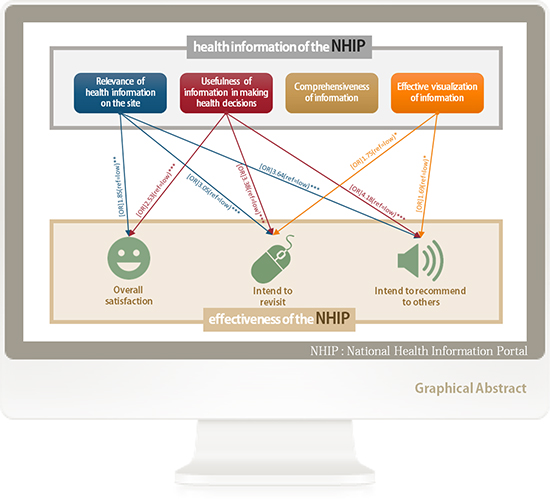1. Jung SM, Jo HS, Oh HW. Internal motivation, perceived health competency, and health literacy in primary and secondary cancer prevention. Asian Pac J Cancer Prev. 2016; 17:5127–5132.
2. Jang H, Sim J, Kim Y. Sources of health information by customer’s characteristics. J Korean Soc Med Inform. 2004; 10:415–427.
3. Glenton C, Paulsen EJ, Oxman AD. Portals to Wonderland: health portals lead to confusing information about the effects of health care. BMC Med Inform Decis Mak. 2005; 5:7–14.
4. Ahn J, Lim IS. The significant role of the National Health Information Portal,
http://health.mw.go.kr. J Korean Med Assoc. 2011; 54:957–960.
5. Bartlett JE, Kotrlik JW, Higgins CC. Organizational research: determining appropriate sample size in survey research. Inf Technol Learn Perform J. 2001; 19:43–50.
6. Kim MJ, Kang NM, Kim SW, Rhyu SW, Chang H, Hong SK, Kim J. Development of an evaluation checklist for Internet health/disease information. J Korean Soc Med Inform. 2006; 12:283–292.
7. Park HJ, Yang HK, Shin DW, Kim YY, Kim YA, Yun YH, Nam BH, Bhatia S, Park BK, Ghim TT, et al. Cross-cultural adaptation of the Korean version of the minneapolis-manchester quality of life instrument-adolescent form. J Korean Med Sci. 2013; 28:1788–1795.
8. Kaiser HF. An index of factorial simplicity. Psychometrika. 1974; 39:31–36.
9. Han DH, Lee JJ, Moon DS, Cha MJ, Kim MA, Min S, Yang JH, Lee EJ, Yoo SK, Chung US. Korean version of inventory of complicated grief scale: psychometric properties in Korean adolescents. J Korean Med Sci. 2016; 31:114–119.
10. Park S, Lee S. Exploring categories of health information users on the basis of illness attitude and health information seeking behavior on the Internet. Korean J Journal Commun Stud. 2011; 55:105–133.
11. Yu HJ, An CH, Hwang SY. Interactivity represented on health-related websites: a content analysis of Korean health information websites. Korean J Advert Public Relat. 2011; 13:65–104.
12. Nam J, Park T. A study on structural relationship among perceived interactivity and user related variables in health information websites. J Korean Soc Inf Manage. 2014; 31:103–131.
13. Eysenbach G, Köhler C. How do consumers search for and appraise health information on the world wide web? Qualitative study using focus groups, usability tests, and in-depth interviews. BMJ. 2002; 324:573–577.
15. Childs S. Developing health website quality assessment guidelines for the voluntary sector: outcomes from the judge project. Health Info Libr J. 2004; 21:Suppl 2. 14–26.
16. Jadad AR, Gagliardi A. Rating health information on the Internet: navigating to knowledge or to Babel? JAMA. 1998; 279:611–614.
17. Chung YC, Park HA. Development of a health information evaluation system on the Internet. J Korean Soc Med Inform. 2000; 6:53–66.
18. Lee YS, Ju YH, Im MK. O SW. The analysis of health promotion information on the Internet. J Korean Soc Med Inform. 2001; 7:11–20.
19. Eysenbach G, Powell J, Kuss O, Sa ER. Empirical studies assessing the quality of health information for consumers on the world wide web: a systematic review. JAMA. 2002; 287:2691–2700.
20. Ko ES, Lee KH. Pre-service teachers’ understanding of statistical sampling. J Educ Res Math. 2011; 21:17–32.







 PDF
PDF ePub
ePub Citation
Citation Print
Print





 XML Download
XML Download